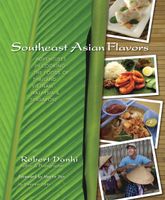Advertisement
Coconut
Cocos nucifera
By Robert Danhi
Published 2008
As the coconut matures on the tree, the water inside diminishes and the white flesh firms. This white meat is used for coconut milk or is shredded for culinary uses. It’s what most Westerners would associate with sweetened coconut for candy or macaroon cookies. In Southeast Asia the meat is grated and toasted as part of the sauce for Malaysian beef rendang curry or used fresh to encase the Nyonya ondeh ondeh (molten palm sugar pandan balls). Green, immature coconuts are sold chilled as refreshing drinks across Southeast Asia. The Vietnamese have developed recipes where pork belly and hard-boiled eggs are simmered in the juice. They also use chunks of green coconut in their sweet snack, Chè. Vietnamese: dừa; Malay: kelapa

